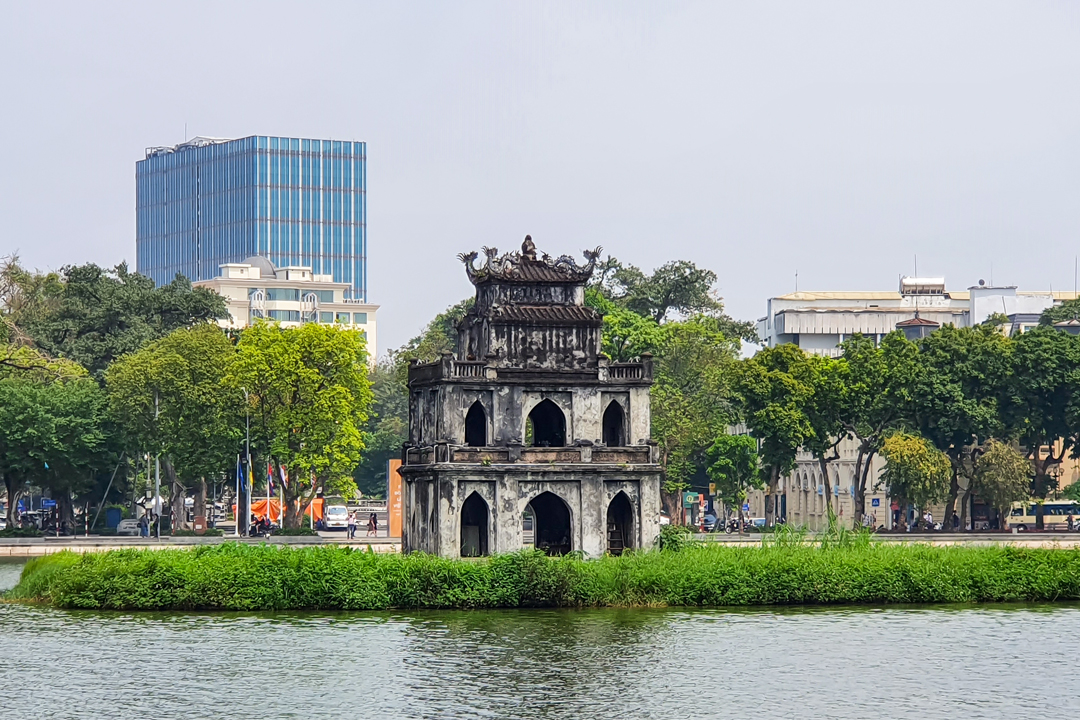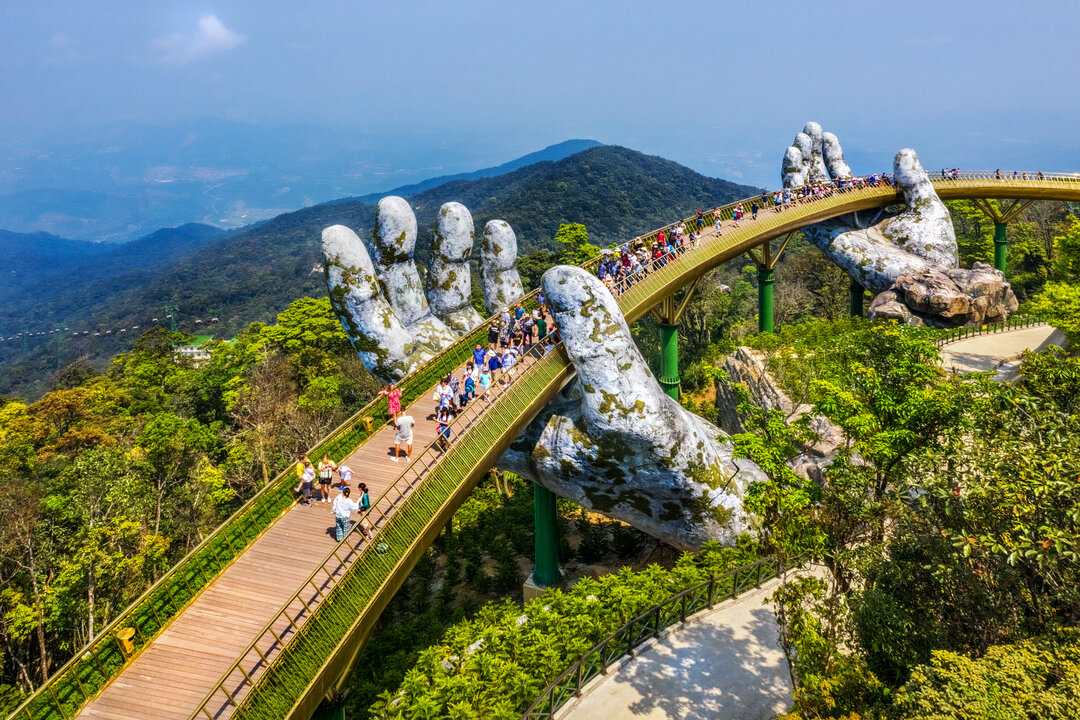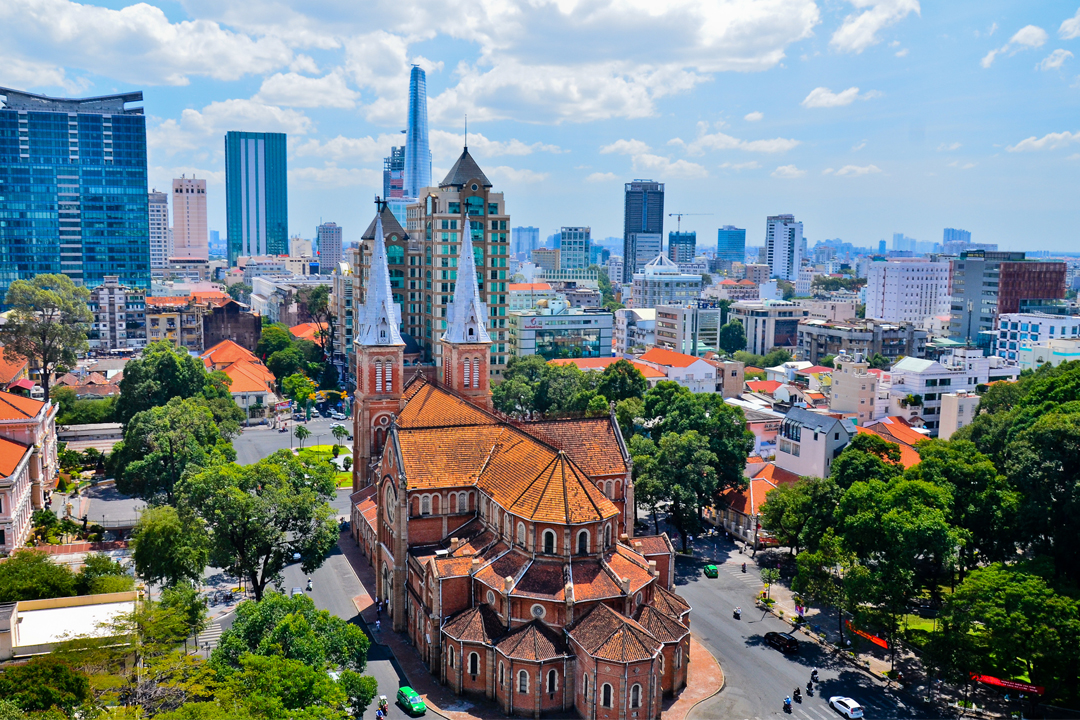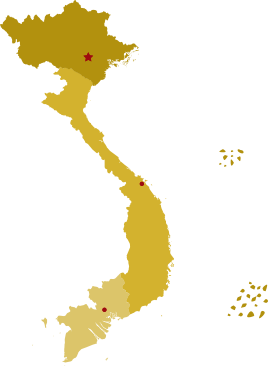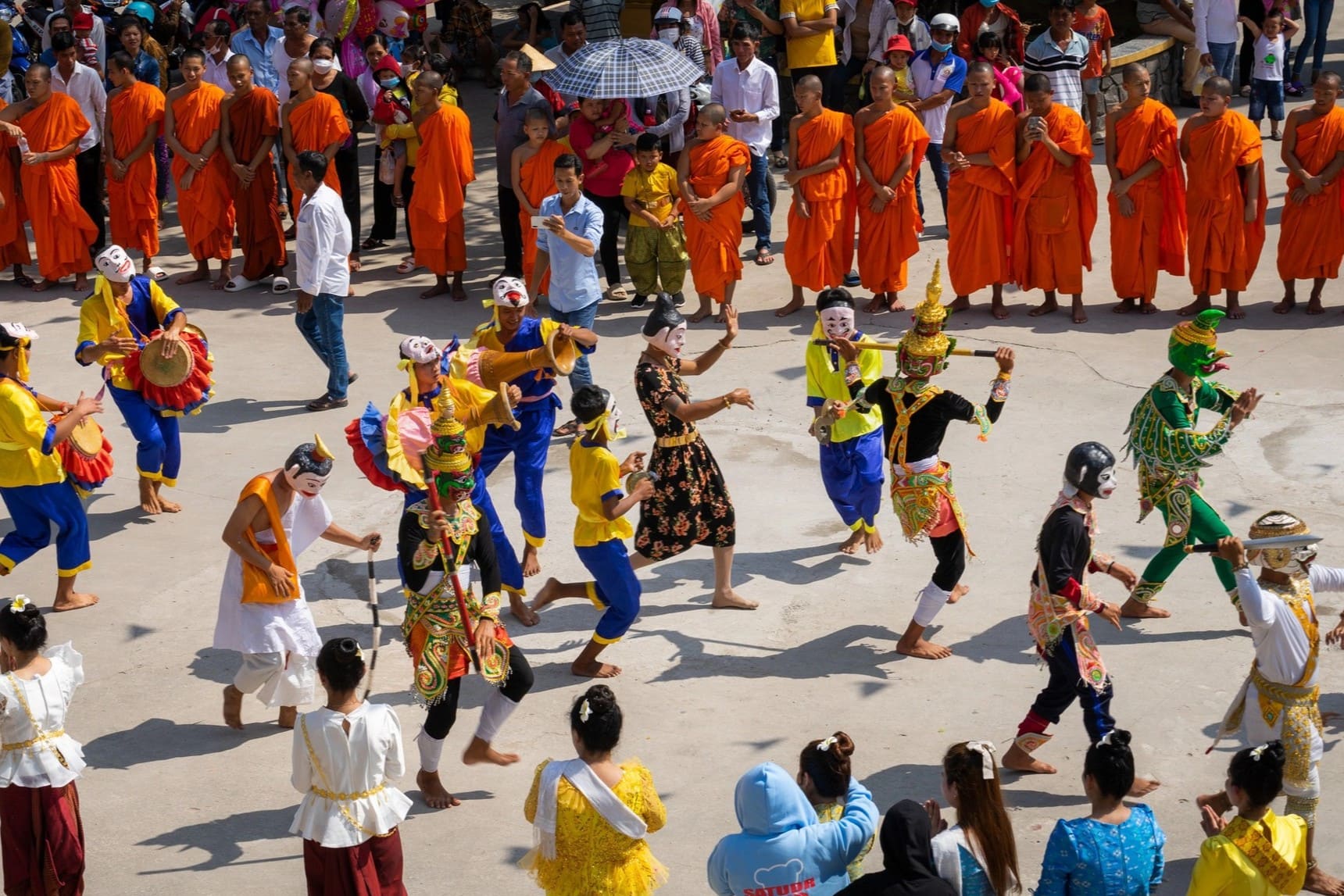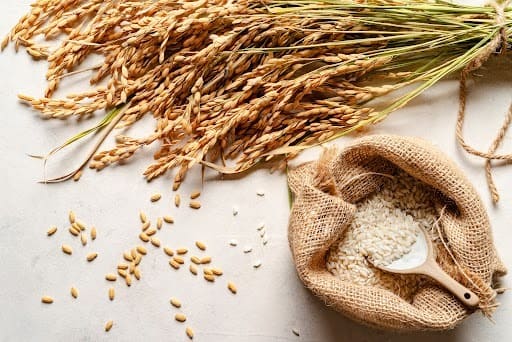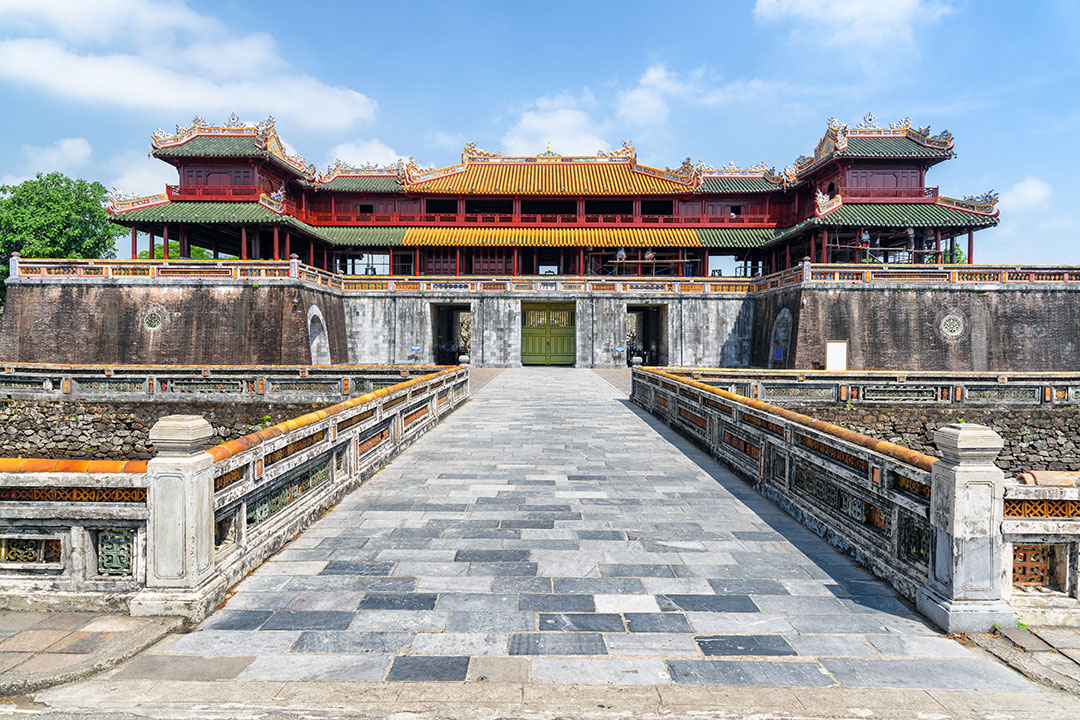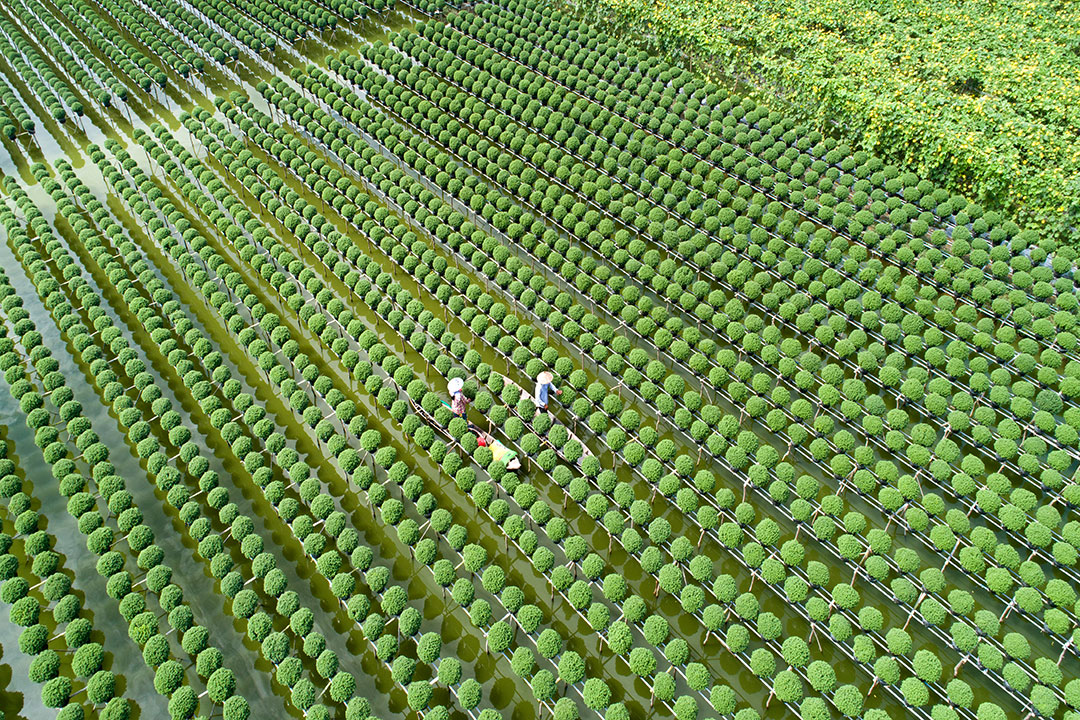Dong Ba Market: History, Architecture, Things To Do & Travel Guide
For travelers venturing into the vibrant landscape of Hue, Dong Ba Market in Hue beckons as a captivating entry point into the heart of local culture. Located by the peaceful Perfume River near Truong Tien Bridge, this market is a vibrant relic of Vietnam’s Nguyen Dynasty-era heritage. Under one roof, this market brings together traditional Vietnamese goods, food stalls serving Hue specialties: bun bo hue and me xung. It also offers a space where visitors can practice bargaining with local vendors.
Our guide dives into market life, revealing hidden spots and tips to enrich your visit. Dive deeper and uncover the essence of a Hue experience that goes beyond shopping, straight into the soul of Central Vietnam.
History of Dong Ba Market
Dong Ba Market, located at 2 Tran Hung Dao Street, Phu Hoa Ward and along the northern bank of the Perfume River in Hue City, is a historic and cultural landmark. Over the centuries, it has evolved into one of Vietnam's most iconic traditional markets. Its origins trace back to the early 19th century during the reign of King Gia Long, when a market named Quy Gia Thi was established near Chanh Dong Gate. This market symbolized the return of the Nguyen Dynasty to Hue after conflicts with the Tay Son forces. However, it was destroyed in 1885 during an attack on Hue Citadel by French colonial forces.
In 1887, King Dong Khanh ordered the reconstruction of the market, renaming it Dong Ba Market. Two years later, King Thanh Thai moved it to its current location at the crossroads of the Perfume River and Dong Ba Canal. This strategic relocation ensured its accessibility and prominence as a central hub for trade and daily life in Hue. By the late 19th century, Dong Ba Market had firmly established itself as a vital commercial center for Thua Thien-Hue Province.
The market underwent significant transformations throughout its history. Dong Ba Market, on the north bank of the Perfume River in Hue, is a historic site that has grown into one of Vietnam's most iconic traditional markets. This modernization allowed Dong Ba Market to accommodate thousands of vendors and visitors daily while preserving its historical architecture and cultural essence.
Despite its modernization, Dong Ba Market retains its traditional charm and remains a repository of Hue's cultural heritage. It showcases local specialties such as fermented shrimp paste, sesame candies, and conical poem hats, alongside seasonal fruits like figs and pomelos. The market also serves as a hub for traditional handicrafts and authentic Hue cuisine, making it a vibrant reflection of Central Vietnam's identity.
Today, Dong Ba Market stands as a bustling commercial center and as a symbol of resilience and continuity in Hue's history. It attracts locals and tourists alike, offering a unique glimpse into the rhythms of daily life and the enduring spirit of Vietnamese culture.
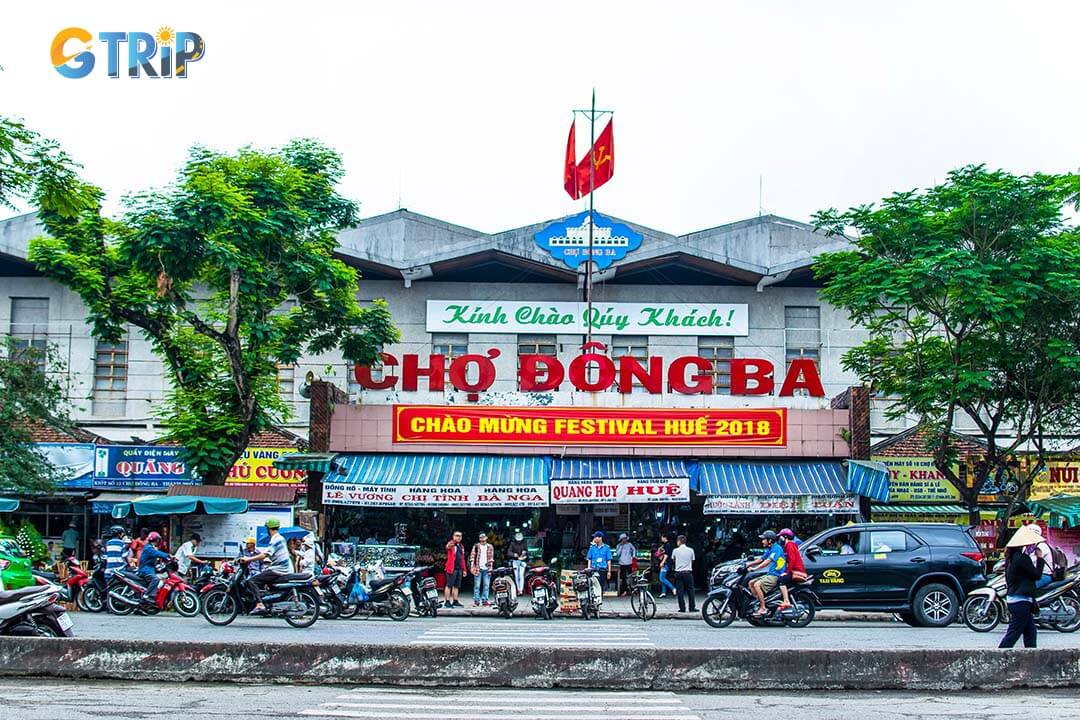
Dong Ba Market is a historic riverside hub in Hue that blends centuries-old heritage with vibrant trade, local cuisine, and traditional crafts
Architectural structure of Dong Ba Market
Dong Ba Market features a distinctive three-story design with a central bell tower. Surrounding rows of stalls create an architectural complex that blends traditional style with practical commercial space.
Central building
The central building of Dong Ba Market is often referred to as the "bell tower" or "bell floor", but this term does not imply a literal bell-shaped design. Instead, it is a three-story structure that serves as the heart of the market, organizing its goods and activities. This architectural design serves as the heart of the market, housing the majority of its goods and activities. Each floor within the bell-shaped structure is dedicated to specific types of products:
- Ground floor: This level is a vibrant hub for fresh produce, dried seafood, and local culinary specialties such as fermented fish sauce and dried foods. It offers a sensory experience with colorful displays and aromatic scents.
- Second floor: Here, you can find handcrafted souvenirs, including conical hats, ceramics from Phuoc Tich village, and bamboo products. This floor highlights the rich artisanal heritage of Hue.
- Third floor: Dedicated to textiles and clothing, this level specializes in fabrics for Ao Dai, the traditional Vietnamese dress, alongside everyday garments.
Rows of houses surrounding in a U-shape
Surrounding the central building are U-shaped rows of houses that form a belt-like structure around the market. These rows are organized into sections based on product categories, ensuring ease of access for shoppers. They include stalls selling household items, seasonal fruits, flowers, spices, and more. The arrangement creates a bustling atmosphere while maintaining order within the expansive marketplace.
Outdoor stalls
The outdoor stalls extend the market’s offerings beyond the main building. These open-air spaces feature vendors selling souvenirs, conical hats, and other daily necessities. The lively energy of these stalls provides visitors with an authentic experience of Hue's street market culture.
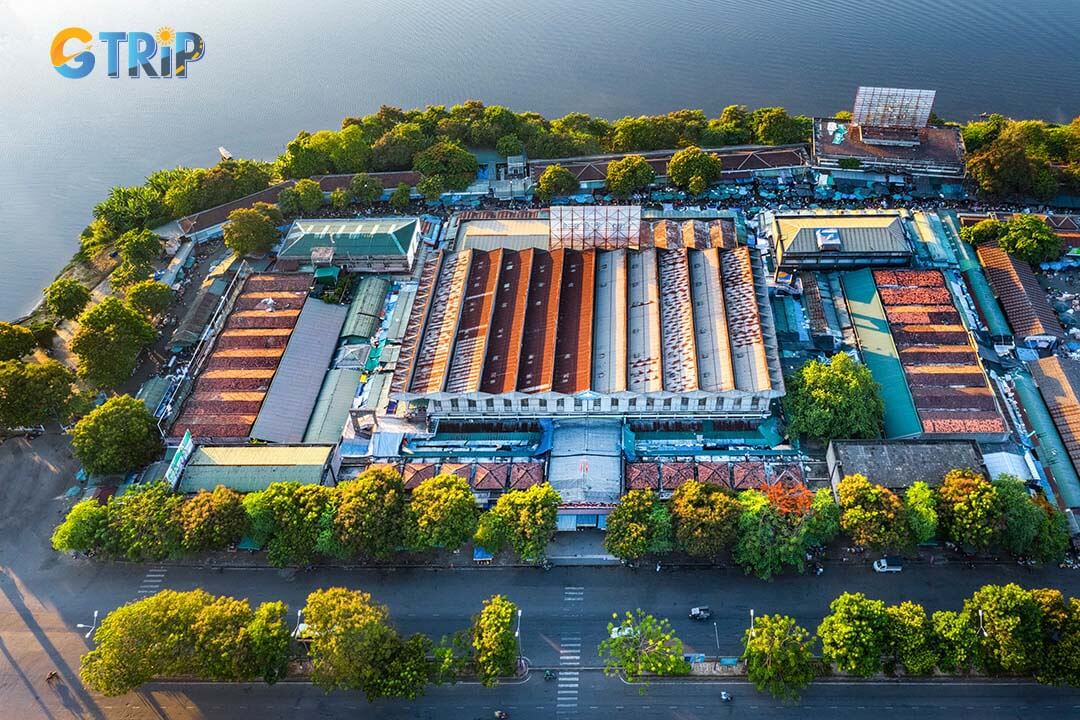
Dong Ba Market’s unique three-story structure, central bell tower, and surrounding U-shaped rows create a vibrant space that blends traditional architecture
Dong Ba Market’s architectural layout is centered around its main building, with surrounding rows and outdoor stalls. This design embodies both functionality and cultural significance. It serves as a vibrant hub for commerce while preserving Hue’s rich traditions and history.
6 things to do when visiting Dong Ba Market
When visiting Dong Ba Market, Hue’s largest and most vibrant traditional market, numerous activities allow you to immerse yourself in the local culture, cuisine, and craftsmanship.
1. Explore the Dong Ba Market food court
Start your visit on the first floor, where you can discover a wide variety of fresh produce, dried seafood, and Hue’s famous culinary specialties. This area is renowned for its diverse selection of fish sauces, including Co Ri fish sauce and fermented shrimp paste, which vendors often let you sample before buying. It’s an excellent place to pick up authentic ingredients or unique snacks to take home. You’ll also find a vibrant atmosphere where locals come to shop for their daily essentials.
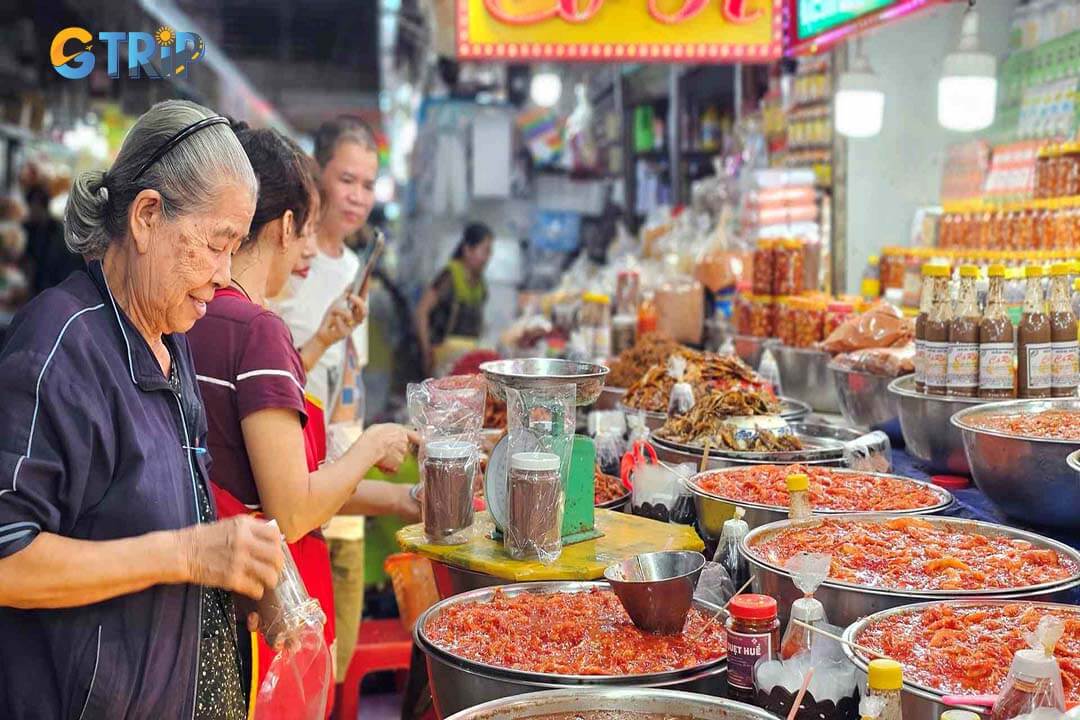
Explore the first floor for fresh produce, signature fish sauces, and authentic Hue flavors in a lively local setting
2. Shop for traditional handicrafts and souvenirs
The second floor is dedicated to handicrafts and handmade gifts. Here, you'll find conical hats from Phu Cam Village, ceramics from Phuoc Tich, bamboo products, and jewelry from Ke Mon Village. These items make meaningful souvenirs and showcase the rich artisanal traditions of the region. Each product reflects the skill and creativity of local artisans passed down through generations.
3. Try tailoring an Ao Dai
The third floor specializes in textiles and clothing, particularly fabrics for the traditional Vietnamese Ao Dai. Visitors can browse a wide selection of colorful fabrics and unique designs, and even have an Ao Dai tailored to their liking. This floor is a must-visit for those interested in Vietnamese fashion and cultural attire. The custom tailoring experience offers a personal touch, allowing you to leave with a one-of-a-kind piece of traditional clothing.
4. Taste authentic Hue street food
Outside the main building, numerous street food vendors offer a delicious array of local dishes at affordable prices. Try iconic Hue specialties such as bun bo Hue (Hue beef noodle), turmeric vermicelli, Kim Long grilled meat vermicelli, and various types of rice paper snacks. Sampling these dishes provides a true taste of Hue’s culinary heritage. The bustling food stalls also offer a great chance to interact with locals and learn more about the city’s flavors.
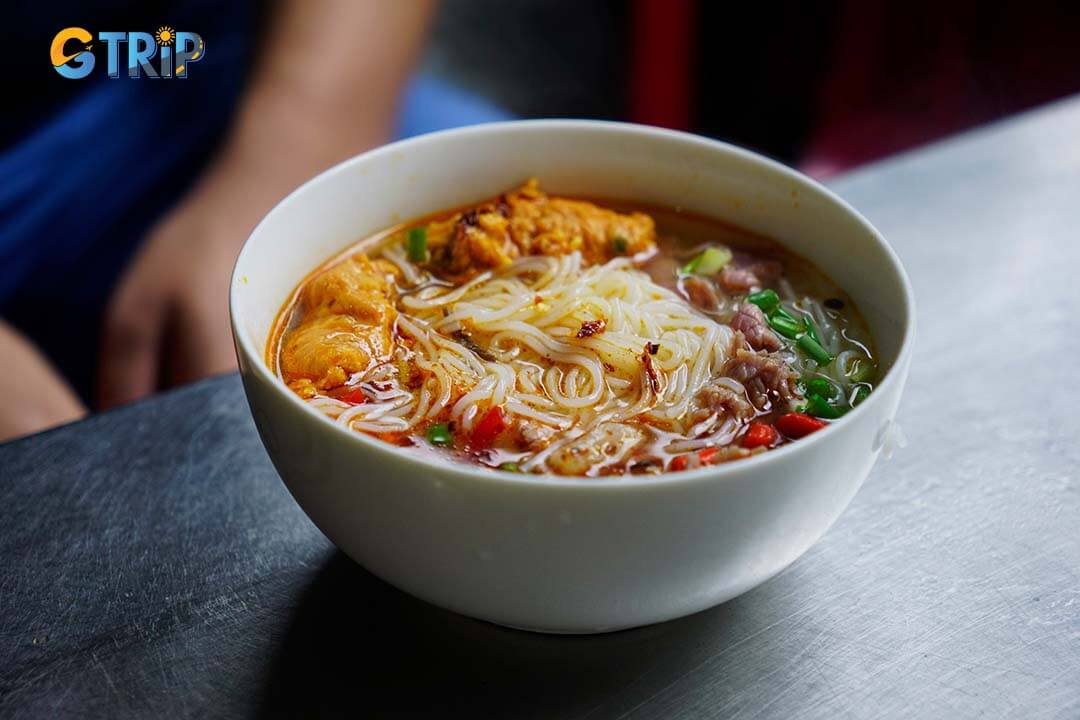
Visiting Dong Ba Market, you should eat Hue specialties like bun bo hue and me xung
5. Experience local market life with bargaining
Beyond shopping and eating, Dong Ba Market offers a lively atmosphere where you can observe and participate in the daily life of Hue’s residents. Engage with friendly vendors, practice bargaining skills, and enjoy the vibrant hustle and bustle that characterizes Vietnamese markets. Vendors typically quote higher prices to tourists, so feel free to negotiate politely and play along. Start with a friendly greeting, make your offer with a smile, and be willing to walk away if the price doesn’t suit you. This interaction provides a deeper understanding of local customs and social life.
6. Capture the Dong Ba Market scenes
The market’s distinctive central building, surrounded by U-shaped rows of stalls, offers many photo opportunities. Capture the colorful displays, busy vendors, and the dynamic energy of this historic marketplace to preserve your memories of Hue’s cultural heart. Visiting Dong Ba Market is not just about shopping. It’s a rich cultural experience that combines history, cuisine, craftsmanship, and community life in one vibrant setting.
Operating hours and best visiting times
Dong Ba Market opens around 5:00-6:00 AM and closes between 6:00-7:00 PM, with some food stalls and night vendors staying open until 7:00-8:00 PM. To enter the market, there will be no cost, you only need to prepare money for shopping.
Best visiting times:
- Early morning (5:00-8:00 AM): This is the best time to see the market at its liveliest, with fresh produce, seafood, and flowers available. The atmosphere is vibrant but less crowded, ideal for photography and exploring.
- Mid-afternoon (around 3:00 PM): This is a pleasant time to visit because the weather cools down a little, the crowd thins, and most stalls are still open, allowing for comfortable shopping.
- Evening (after 6:00 PM): The main market usually closes, but a night market with food stalls opens nearby, offering a different experience focused on street food.
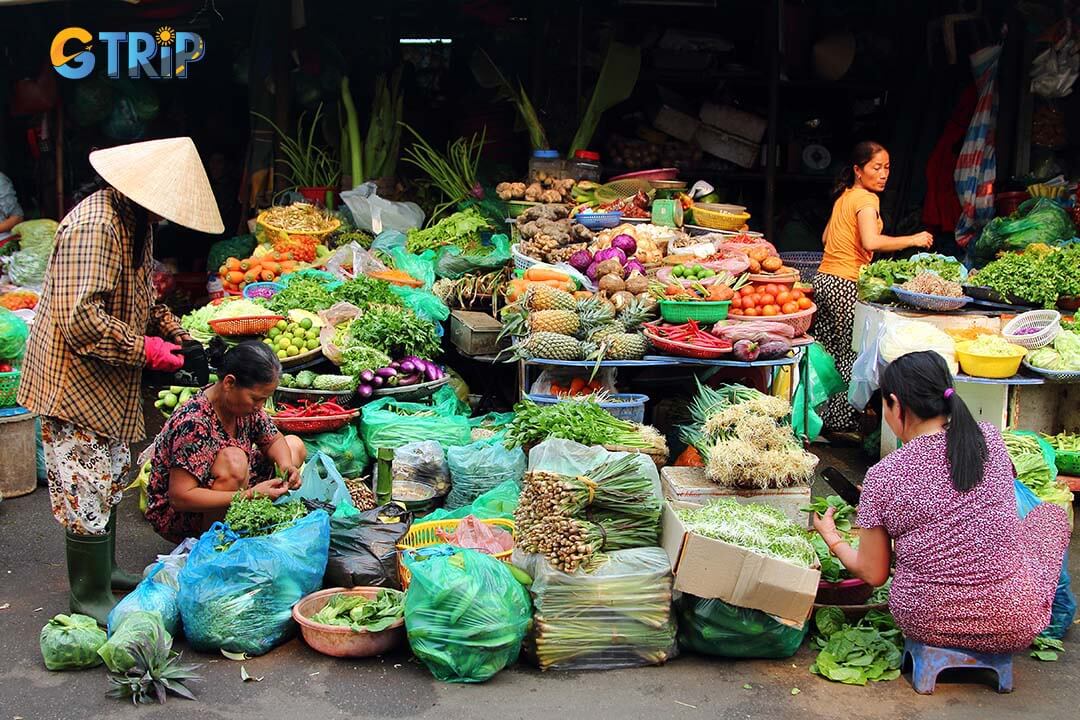
Dong Ba Market opens early at 5:00-6:00 AM and closes between 6:00-7:00 PM, with some food stalls staying open until 7:00-8:00 PM
How to get to Dong Ba Market?
Dong Ba Market is located at 2 Tran Hung Dao Street, Phu Hoa Ward, in central Hue City, between the Truong Tien and Gia Hoi bridges along the Perfume River. It is approximately 1.3 kilometers from the city center, making it easily accessible by various transportation options.
By walking or cycling
If you are staying near the city center or along the Perfume River, Dong Ba Market is within comfortable walking distance. Many visitors enjoy a stroll to the market to soak in the local atmosphere and scenic river views. Alternatively, renting a bicycle is a popular and eco-friendly way to reach the market, with daily rental prices typically ranging from 30,000 to 50,000 VND (about 1.30 to 2.10 USD). For a more traditional experience, you can take a cyclo (pedicab), with fares usually between 50,000 and 100,000 VND (approximately 2.10 to 4.30 USD), depending on distance.
By motorbike or car
Renting a motorbike is a common choice for tourists seeking flexibility. Motorbike rentals generally cost around 100,000 to 150,000 VND per day (about 4.30 to 6.50 USD). The market offers parking facilities where you can park your motorbike for about 5,000 VND (0.20 USD) or a car for around 30,000 VND (1.30 USD). Driving yourself allows you to explore other nearby attractions conveniently.
By taxi or ride-hailing services
Taxis and ride-hailing apps like Grab are widely available in Hue. A taxi ride from the city center to Dong Ba Market typically costs between 50,000 and 300,000 VND (approximately 2.10 to 12.90 USD), depending on your starting point and traffic conditions. This option is suitable for groups or those seeking comfort and convenience.
By public bus
Public buses serve routes that stop near Dong Ba Market, with the closest bus stop approximately 210 meters (a 3-minute walk) from the market entrance. Bus fares are very affordable, usually under 10,000 VND (about 0.40 USD) per trip, making it a budget-friendly option for travelers.
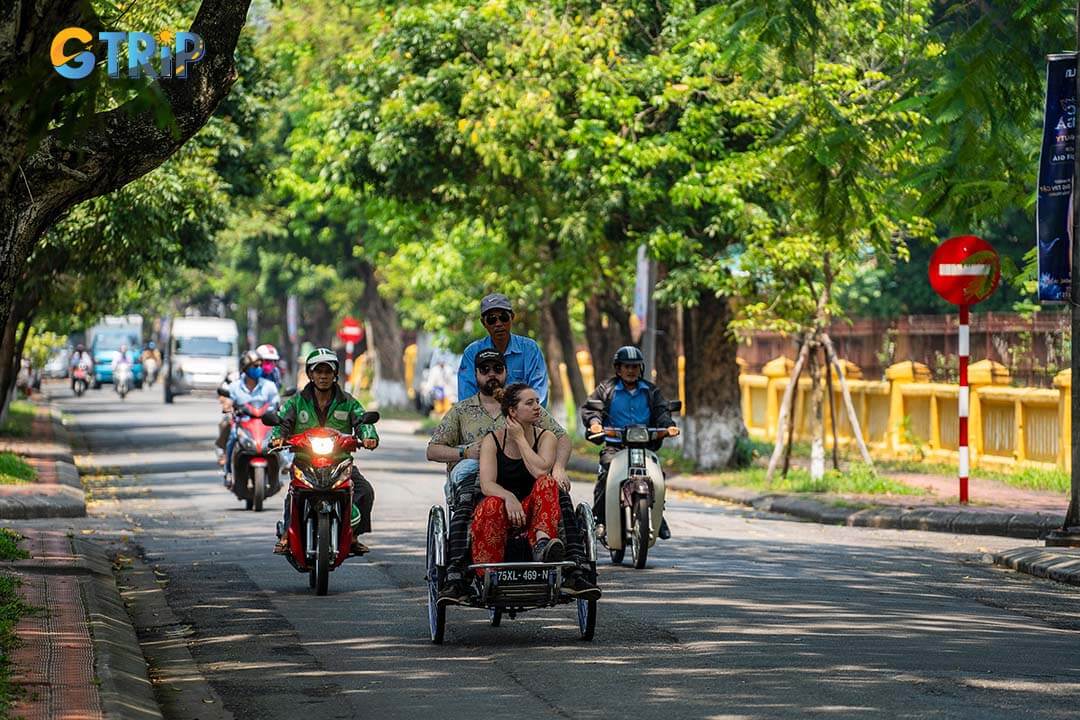
Dong Ba Market, located in central Hue City along the Perfume River, is easily accessible and offers a vibrant mix of local goods and cultural experiences
Thanks to its central location and multiple transport options, reaching Dong Ba Market is straightforward and convenient. Walk, cycle, take public transport, or hire a taxi, you can easily access this vibrant cultural and commercial hub to fully enjoy the rich experiences it offers. If you are not sure how to get there, you can book a Hue Tour from travel service providers for specific instructions.
Essential tips when visiting Dong Ba Market
To make the most of your visit to Dong Ba Market, a bit of preparation goes a long way. Below are some practical tips to help you navigate the market like a local, ensuring a smoother, more enjoyable experience while respecting local customs and culture.
- Bring cash and small change
Most vendors prefer cash payments, so carry enough Vietnamese Dong (VND) in small bills and coins to facilitate smooth transactions. - Wear comfortable shoes
The market is large and often crowded with uneven floors, so comfortable footwear is essential for walking and exploring without discomfort. - Start exploring on the upper floors
Begin your visit on the second and third floors to browse handicrafts, textiles, and souvenirs before heading down to the ground floor for food and fresh produce. - Bargain politely
Bargaining is expected but should be done respectfully. Start by offering 70-80% of the asking price and engage in friendly negotiation without being aggressive. - Avoid bargaining on food items
Prices for food and drinks are usually fixed, so enjoy local specialties without haggling to respect vendors and enjoy authentic flavors. - Visit in the afternoon for a relaxed experience
Around 3:00 PM - 4:00 PM is a great time to visit when the weather cools and the market is less crowded, allowing for a more comfortable shopping experience. - Bring a reusable shopping bag
To reduce plastic waste, bring your own bag for carrying purchases, especially if you plan to buy multiple items or souvenirs. - Be open to trying local foods
Dong Ba Market is famous for its traditional Hue dishes; don’t miss tasting specialties like bun bo Hue, sesame candy, and fermented shrimp. - Respect local customs and vendors
Greet vendors warmly with “Xin chao” and maintain a friendly attitude to build rapport and enjoy positive interactions. - Leave room in your luggage
If you plan to buy souvenirs or handicrafts, make sure you have enough space in your luggage to bring your treasures home safely.

Prepare ahead with these practical tips to ensure a smooth and enjoyable visit to Dong Ba Market, while respecting local customs and culture
Nearby attractions to visit from Dong Ba Market
When visiting Dong Ba Market in Hue, several notable attractions are located within easy reach, offering a rich blend of history, culture, and scenic beauty:
Trinh Cong Son Park
Trinh Cong Son Park, located along the scenic Perfume River in Hue, is a tranquil green space dedicated to honoring one of Vietnam’s most beloved musicians, Trinh Cong Son. The park features a hexagonal central plaza and beautifully landscaped gardens, offering visitors a peaceful retreat from the city’s bustle. A bronze statue by sculptor Truong Dinh Que portrays Trinh Cong Son seated in quiet reflection. The statue, about 1.7 meters tall and weighing around 500 kg, was inaugurated in 2023, symbolizing the city’s deep respect for his legacy.
The park frequently hosts musical events and festivals, especially during the annual Hue Festival, where performances inspired by Trinh Cong Son’s music take place. You enjoy strolling along the riverbank, soaking in the serene atmosphere, and reflecting on the profound impact Trinh Cong Son’s songs had on Vietnam’s history and culture. The park’s location near Dong Ba Market makes it an ideal spot to relax after exploring the vibrant market scene.
Truong Tien Bridge
Truong Tien Bridge, also known as Trang Tien Bridge, is one of Hue’s most iconic landmarks, spanning the Perfume River near Dong Ba Market. Designed by the French architect Gustave Eiffel, the bridge was completed in 1899 and has since been a vital connection between the northern and southern parts of the city. The steel structure features elegant arches and a distinctive design that blends French colonial engineering with local aesthetics. At night, the bridge is beautifully illuminated, creating a romantic atmosphere along the riverbanks.
It is a symbol of Hue’s historical resilience and cultural identity. You often stroll across the bridge to enjoy panoramic views of the Perfume River and the surrounding cityscape. Close to Dong Ba Market and the Imperial City, the bridge is a favorite for photos, strolls, and glimpses of daily life in Hue.

Truong Tien Bridge is a historic symbol of Hue, offering stunning views of the Perfume River and connecting the city's northern and southern parts
Hue Imperial City
The Hue Imperial City, also known as the Imperial Citadel of Hue, is a UNESCO World Heritage Site and the historic seat of the Nguyen dynasty emperors. Just 2 km from Dong Ba Market, this grand complex of palaces, temples, and gardens showcases the splendor of Vietnam’s last imperial capital. The Citadel is divided into several zones, including the Forbidden Purple City, which was once the exclusive domain of the emperor and his family.
You can explore ornate gates, royal residences, and ceremonial halls that showcase a unique blend of Vietnamese, Chinese, and French architectural influences. The site also hosts cultural events and traditional performances, allowing visitors to immerse themselves in the rich history and heritage of Hue. Walking through the Imperial City offers a glimpse into Vietnam’s royal past, with its intricate designs, symbolic motifs, and serene courtyards. The Citadel’s close location to Dong Ba Market makes it convenient for tourists to combine cultural exploration with local shopping and dining experiences.
Song Huong Performing Arts Theater
The Song Huong Performing Arts Theater is a premier venue dedicated to preserving and showcasing the traditional music and performing arts of Hue. The theater specializes in Nha Nhac, the royal court music of the Nguyen dynasty, which is recognized by UNESCO as an intangible cultural heritage. You can enjoy live performances featuring classical instruments, traditional costumes, and elegant dances that narrate historical and cultural stories of the region.
The theater’s architecture complements the cultural experience, designed to reflect Hue’s royal aesthetics and provide an intimate setting for audiences. Performances are typically scheduled during the day and are a highlight for those interested in Vietnamese heritage and performing arts. A show at Song Huong Theater offers a rare glimpse into centuries-old musical and artistic traditions. Its location near Dong Ba Market and the Imperial City makes it an accessible cultural stop for tourists exploring Hue.
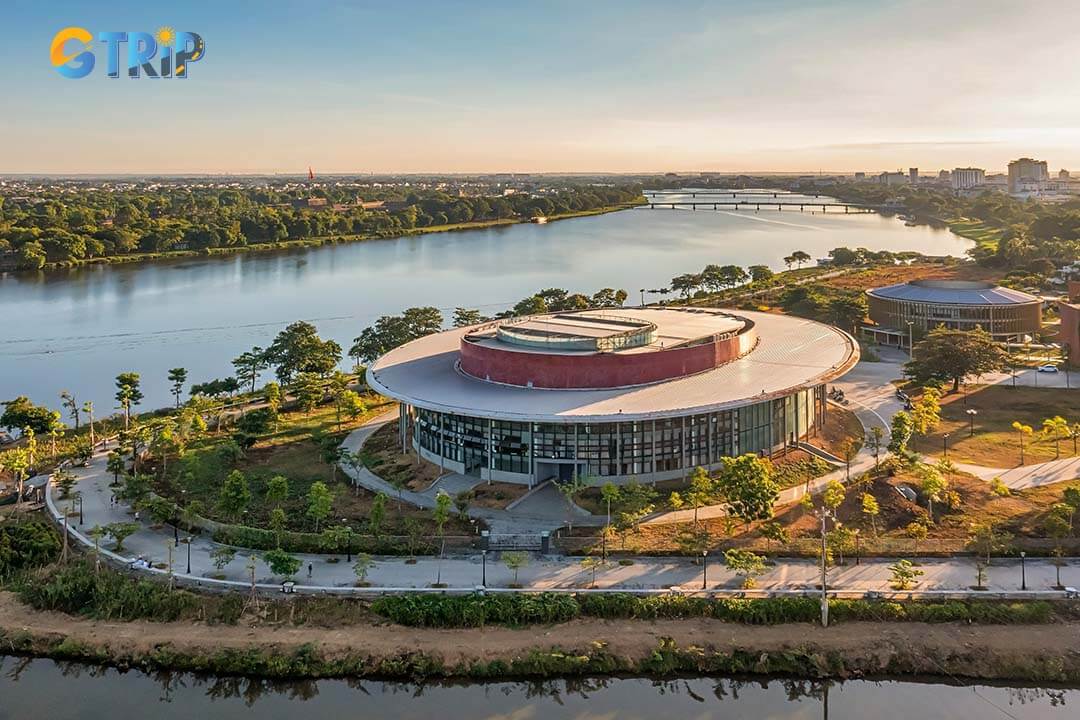
The Song Huong Performing Arts Theater is a cultural venue in Hue offering live performances that highlight the region’s traditional arts and history
Dong Ba Market is more than just a bustling marketplace, it is a vibrant cultural and historical landmark that encapsulates the essence of Hue. The market immerses visitors in local culture with fresh produce, handicrafts, and iconic souvenirs like conical hats. Its food court is a haven for culinary enthusiasts, showcasing Hue's gastronomic heritage with specialties such as Bun Bo Hue and sesame candy. Beyond shopping, Dong Ba Market lets visitors connect with locals and experience Hue’s everyday traditions.
A visit to this iconic market is a journey into the heart of Hue's culture, making it an indispensable part of any trip to the city. To experience Hue’s history, culture, and flavors fully, consider booking guided tours with GTrip - Vietnam Travel Agency, where expert local guides will lead you through the Dong Ba Market.

